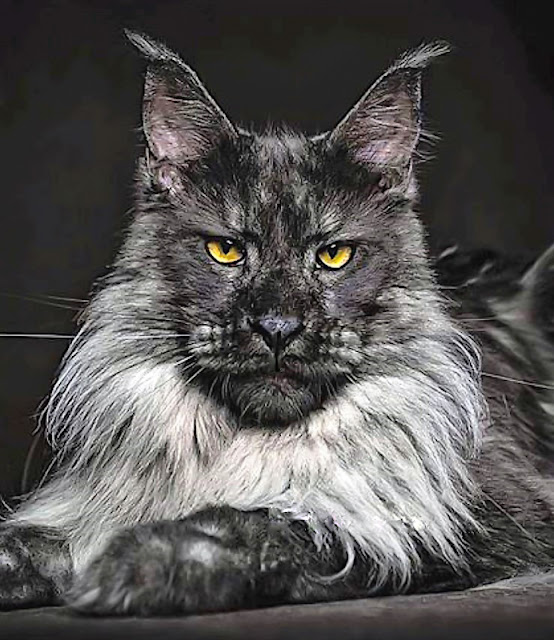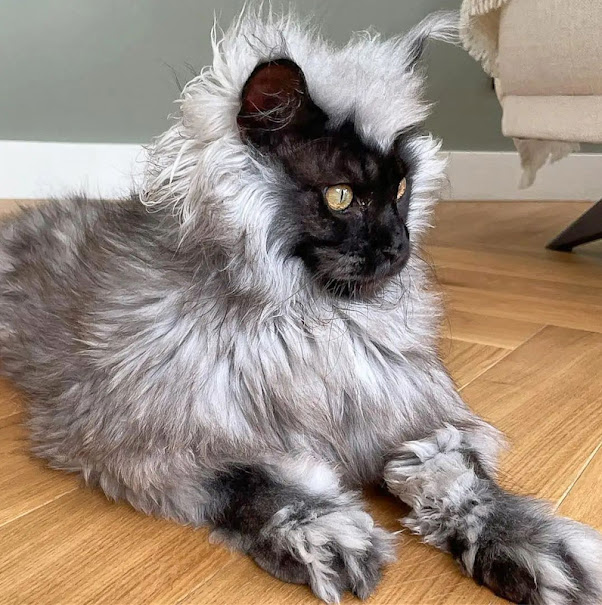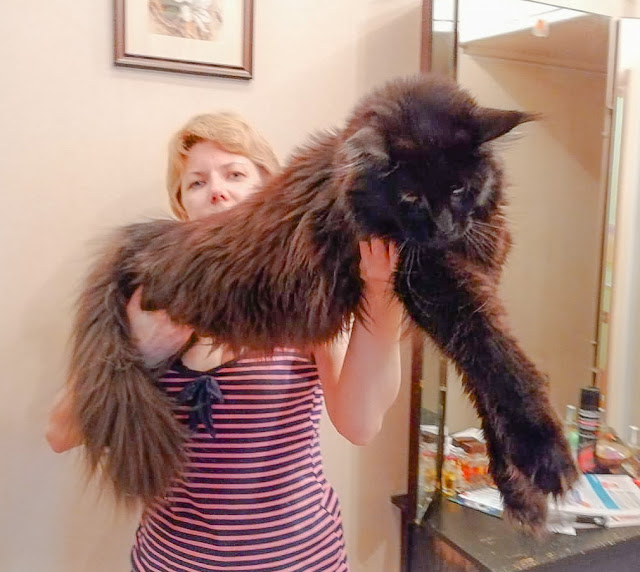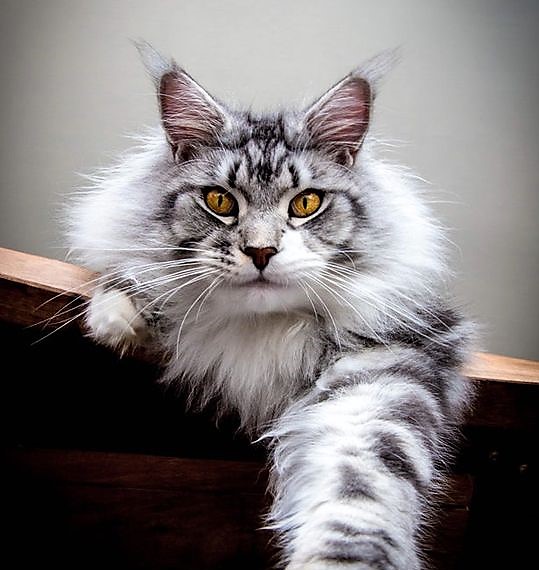15 facts about spinal muscular atrophy in Maine Coon cats
Here are 15 facts about spinal muscular atrophy (SMA) in Maine Coon cats.
- SMA is an inherited genetic disease in Maine Coon cats causing a decreased muscle mass.
- If two carrier cats, that is cats which are heterozygous to the disease which means they carry one copy of the gene mutation, are mated there is a 25% probability of the offspring being affected. This means that 25% of the offspring will be homozygous to the disease which in turn means that they have two copies of the gene mutation. The disease will be present in them.
- The disease affects the spinal cord nerves that control the skeletal muscles of the body and legs. The spinal cord nerves die off.
- The disease is evident at about 3 to 4 months of age.
- Kittens move with a sway in the rear end.
- By the age of 5-6 they can't jump up. The disease is evident at about 3-4 months.
- Muscle mass is decreased.
- It seems that the cats are not in pain and they may lead fairly normal lives as indoor cats.
- There is no treatment.
- In America, UC Davies Veterinary Medicine provide a genetic test for this disease at $40 per animal. The turnaround time is at least 15 business days.
- UC Davies state that "the disease is characterised by progressive instability with unsteady gait and posture abnormalities".
- The disease is inherited as an autosomal (non-sex-linked) recessive gene which means that two copies of the mutated gene need to be present for the disease to be shown. Although one copy will mean that cat is a carrier.
- The UC Davies test identifies affected cats and carriers in order to assist breeders to avoid matings and to stop the disease being inherited.
- UC Davies states that "breeding between carriers will be expected to produce 25% affected, 50% carriers and 25% normal kittens". When two copies of SMA are present the cat is affected (homozygous for the disease as stated above). Their DNA test is carried out on a cheek swab.
- A study states that lifespan is around 8 years (study: Failure of lower motor neuron radial outgrowth precedes retrograde degeneration in a feline model of SMA). And there is no treatment.
Feline spinal muscular atrophy (SMA) is a genetic disorder that affects the motor neurons in domestic cats. It is inherited in an autosomal recessive pattern, which means that a cat must inherit two copies of the mutated gene (one from each parent) in order to develop the disease.
The disease is characterized by a loss of function in the lower motor neurons, which are a type of nerve cell that carries signals from the brain and spinal cord to the muscles.
This leads to muscle weakness and atrophy (shrinking), and can cause difficulty with movement and breathing. A whole genome linkage scan identified a deletion in the LIX1 gene that is associated with feline SMA.
LIX1 is a novel gene that is thought to be involved in the development of SMA, but its exact function is not yet known. Researchers have studied the progression of feline SMA by examining changes in the muscles and spinal cord of affected cats at different ages.
They have found that the first neurological signs of the disease typically occur around 10 to 12 weeks of age, and that there are significant changes in muscle function and structure at this time.
They have also observed that L5 motor axons (a type of nerve fiber) in affected cats begin to degenerate at around 12 weeks of age, and that this degeneration starts distal to the cell body (at the end of the axon) and proceeds in a retrograde (backward) direction.
Finally, they have found that the LIX1 gene may play a role in the radial growth (expansion) of axons, as affected cats fail to undergo radial enlargement of their motor axons prior to axon loss.











Comments
Post a Comment
Please share your Maine Coon experiences.